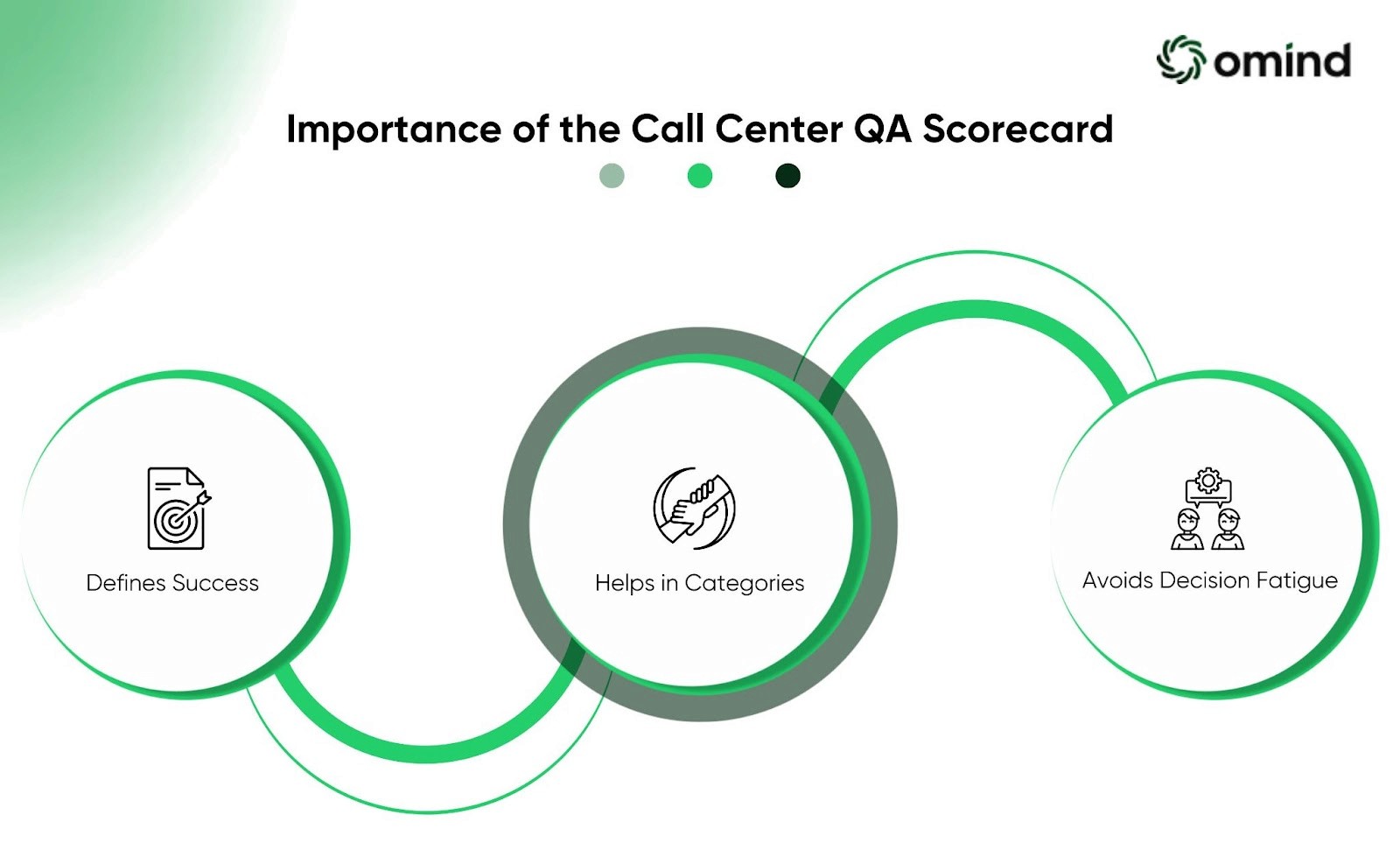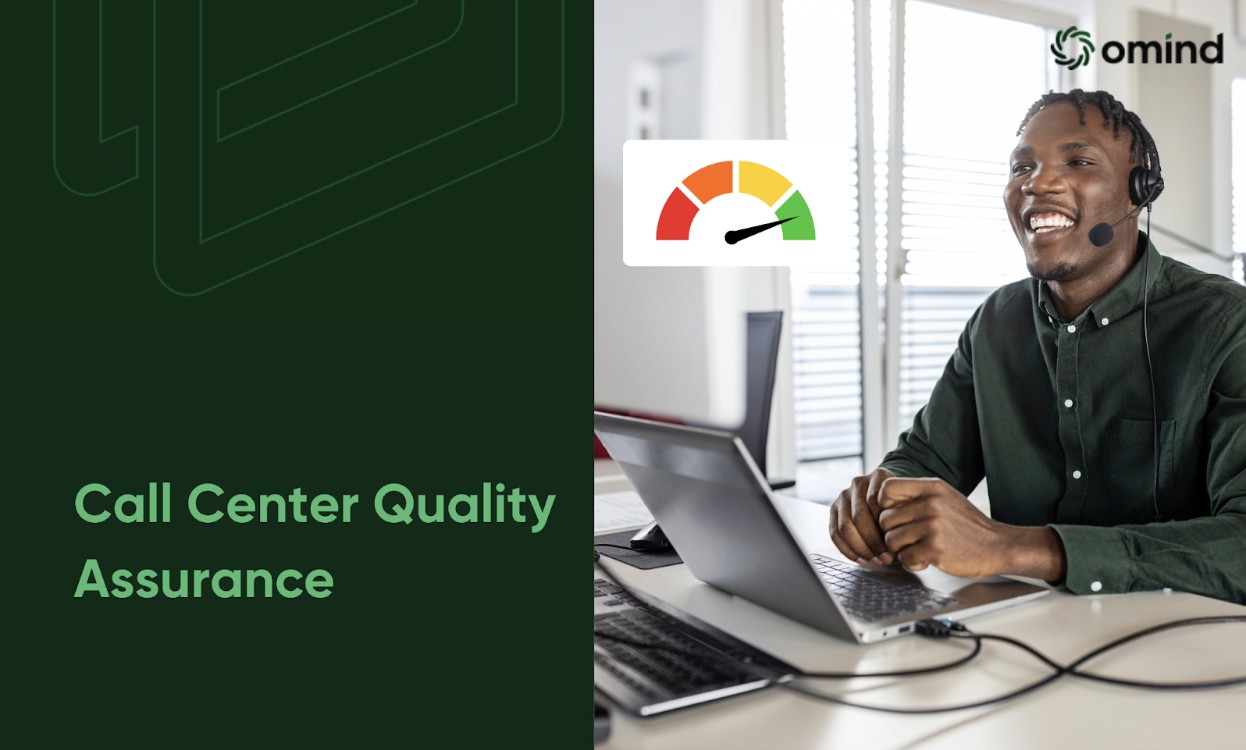Creating an outstanding customer experience (CX) is essential to build retention and to stand out in the market. And for that, a business must evaluate agent-customer conversation and find the pain points to give the best service possible. The solution is creating a call center quality assurance scorecard to ensure the right metrics and consistent evaluations. Through this, a company can ensure that every call meets your quality benchmarks and improves customer satisfaction. With the right approach, you can streamline QA processes and empower your team to deliver excellent service.
What Is a Call Center Quality Assurance Scorecard?
Call centers use a quality assurance scorecard as an essential component to check the quality of conversations with clients. Consider it like a checklist for checking how well your call center agents are doing their job, such as how friendly they are, whether they are solving customer problems, or if they follow the proper steps. The agents may use different methods like phone, email, chat and more, so your scorecard should cover all those communication methods. It can help you spot trends, improve agent performance, and improve customer satisfaction.
Importance of the Call Center QA Scorecard

A QA scorecard is more than just a checklist that drives customer satisfaction and agent performance improvements. Omind's comprehensive QA tools can automatically track and report these metrics for you, reducing manual work and increasing accuracy.
Defines Success: A scorecard can reveal each agent's performance. It outlines expectations and goals, ensuring everyone understands what success looks like. This shared understanding develops a consistent approach to quality across the team.
Helps in Categories: Understanding the key performance indicators helps an organization focus on the most critical aspects of agent performance. This saves time on irrelevant metrics and ensures that evaluation efforts are connected with business objectives.
Avoids Decision Fatigue: A well-structured scorecard can simplify the evaluation process and provide a clear framework for assessing agent performance. A scoreboard can also decrease the time spent on decisions and minimize inconsistencies in evaluations.
Having a clear idea about the importance of QA, let’s dive into the key metrics and KPI.
Key Metrics and KPIs Tracked in the Scorecard
A call center quality assurance scorecard should measure what truly matters. Here are some essential metrics a call center can follow.
Call Resolution Rate: The call Resolution Rate tracks the percentage of customer issues resolved over a series of interactions. Monitoring this measure can help determine whether you must provide agent training or improve product knowledge.
Call Handling Time: In this metric, a business can measure the average time spent on each call and identify the efficiency and problems the agents face. By analyzing this data, you can optimize call flows and agent workloads.
Customer Satisfaction Score: Direct feedback explains how happy customers are with your service. If you get high customer satisfaction scores, that indicates overall call center performance.
First Call Resolution Rate: This rate is similar to the call resolution rate but emphasizes solving issues without transfers. Enhancing this metric can significantly improve customer experience and reduce call handling time.
Following the Rules: Always ensure your agents follow the rules to provide consistent service. Monitor this metric and identify training gaps to improve service quality.
Agent Attendance: Reliability and time management are essential among agents. Consistent attendance and punctuality contribute to overall call center efficiency and customer satisfaction.
Now, let's dive into how to choose and customize rating categories for your scorecard
Choosing and Customizing Rating Categories
For accurate call center evaluations, it's essential to make rating groups that work. Let's look at the steps:
List Participants: Explain who will be involved in creating and using the call center quality assurance scorecard. You can include quality analysts, team leads, and agents.
Review Period: Decide how often you'll conduct quality reviews. A time period is vital, and it should align with your call volume and desired level of oversight.
Goals and Conversation Targets: Everything has a goal, including the call center quality assurance scorecard. Mention what you aim to achieve with it and explain the number of calls to review for each evaluation period.
Categories for Focus: When checking the call, include solution-oriented responses, correct grammar and language, empathetic tone, personalized interactions, and adherence to call scripts or procedures.
Balance Category Count: Aim for three to seven rating areas so reviewers don't feel overwhelmed. Few categories could leave out essential places, and too many could make the list less consistent.
Weighting and Rating Scales

You must assign weights to each rating category to get accurate agent performance. Leveraging Omind's platform allows easy adjustments to weighting and prioritization through its intuitive interface.
Equal or Varied Weights: Decide whether all categories should carry equal weight or if some deserve more emphasis.
Example of Crucial Weights: For instance, the reviews might stress more on categories like "investigation" of customer issues and "tone" of voice as they impact customer satisfaction.
Define Rating Scales: Choose a rating scale that's easy to understand and apply consistently. For example, a 5-point scale (1-5) or a 4-point scale (1-4) is easy to understand.
Now, let's discuss how to collect and analyze the data you've gathered using your scorecard.
Collecting and Analyzing Data
A business must collect and analyze data to ensure the quality of the call center quality assurance scorecard. Let's see how you can do that.
Collect data using techniques like call barging (listening in on live calls), call recording and review, and voice analytics.
Remember that too much monitoring could hurt agent confidence and the quality of calls.
Have clear guidelines for data collection, storage, and analysis, and don't forget about data privacy and security.
Focus on analyzing data that reveals significant trends, strengths, and weaknesses in agent performance.
Once you've gathered and analyzed your data, it's time to refine your scorecard.
Creating and Adjusting the Scorecard
Building a successful call center quality assurance scorecard is an ongoing process. Therefore, adjust the scorecard when necessary.
Use Template or Platform: Before beginning, check that you have the tools to create a foundation for your scorecard. This can save time and effort and ensure all essential elements are included.
Tailoring: Regularly review and modify your scorecard based on performance data and business needs. Omind's platform offers continuous adjustment features that automatically align with performance trends.
Refine Standards and Weightings: The accuracy and effectiveness of your scoreboard matter a lot. So, test and refine your scorecard if required, and going with pilot testing can help identify areas for improvement.
Clarity and Transparency: Communicate with all the stakeholders about the scorecard's purpose, metrics, and evaluation process. Transparency builds trust and develops coordination among the teams.
Agent feedback and coaching are crucial for improving performance.
Agent Feedback and Coaching
Getting feedback from agents and coaching are unavoidable factors for overall call center improvement.
Encourage agents to provide input to the call center quality assurance scorecard to improve the standard. Use scorecard results as a starting point for one-on-one coaching sessions, focusing on specific areas for development.
Offer specific feedback on technical skills and interpersonal abilities to help agents improve in all areas. Highlight agents' strengths to motivate and enhance their confidence. If necessary, focus on coaching after identifying the areas of development. Link comments to performance goals for individuals and teams to see the improvement. Getting feedback from agents is a chance for improvement, not something to be ashamed of.
Implementing and Monitoring Progress

Run a pilot program before implementing the call center quality assurance scorecard. This will help you with testing and refinement without impacting the call center. Once you are ready, roll out the scorecard to all agents.
Regular coaching sessions can make many changes. These sessions should focus on scorecard results, giving comments and support. Continuous monitoring of agent performance and scorecard data is vital as it aids in identifying trends, strengths, and weaknesses to guide necessary adjustments. This process ensures the scorecard remains a valuable tool for improving call center quality.
Now, let's explore using QA scorecard software to streamline the process.
Choosing a Call Centre QA Scorecard Software
Although many tools are available on the market, using the right QA scorecard software can streamline your quality assurance process. Omind's tailored solutions could be a perfect fit for enhancing your QA processes.
Software Features: Once you are ready to find software, check for one that offers customizable dashboards to visualize key performance indicators (KPIs). Good tools like Omind will provide clear and actionable insights into agent performance, allowing you to identify areas for improvement quickly.
The Importance of Demos: When you are satisfied with the selection process, request demos from the provider. Providers like Omind give demos before installation so that a call center can understand how it works. You may also assess how the software aligns with your needs and evaluate its user-friendliness. A good experience like this can help you make a good decision.
Advantages for Larger Teams: The call center quality assurance scoreboard is valuable for larger teams. It has advanced features like automated call analysis, team performance tracking, and integration with other business systems. They are essential for businesses to gain efficiency and improved data accuracy.
Conclusion
Creating a better call center quality assurance scorecard is easy with the help of providers like Omind. From defining clear metrics to balancing agent feedback, the process demands attention to detail. So, the service of an expert is essential to make things easy. A better scorecard can improve call center performance, increase customer satisfaction, and drive overall business success.
Omind's expert hands might be an advantage for your call center quality assurance. The AI-powered platform simplifies scorecard creation, automates data analysis, and provides actionable insights. Use Omind's expertise to streamline operations, improve agent performance, and elevate customer satisfaction. Book a demo today to transform your call center.
AUTHOR
Team Omind
Empowering Businesses with Unified Customer Experience Platform, Leveraging Advanced AI and Intelligent Automation
PRODUCT
QMS
Share LINK
Related Blogs



